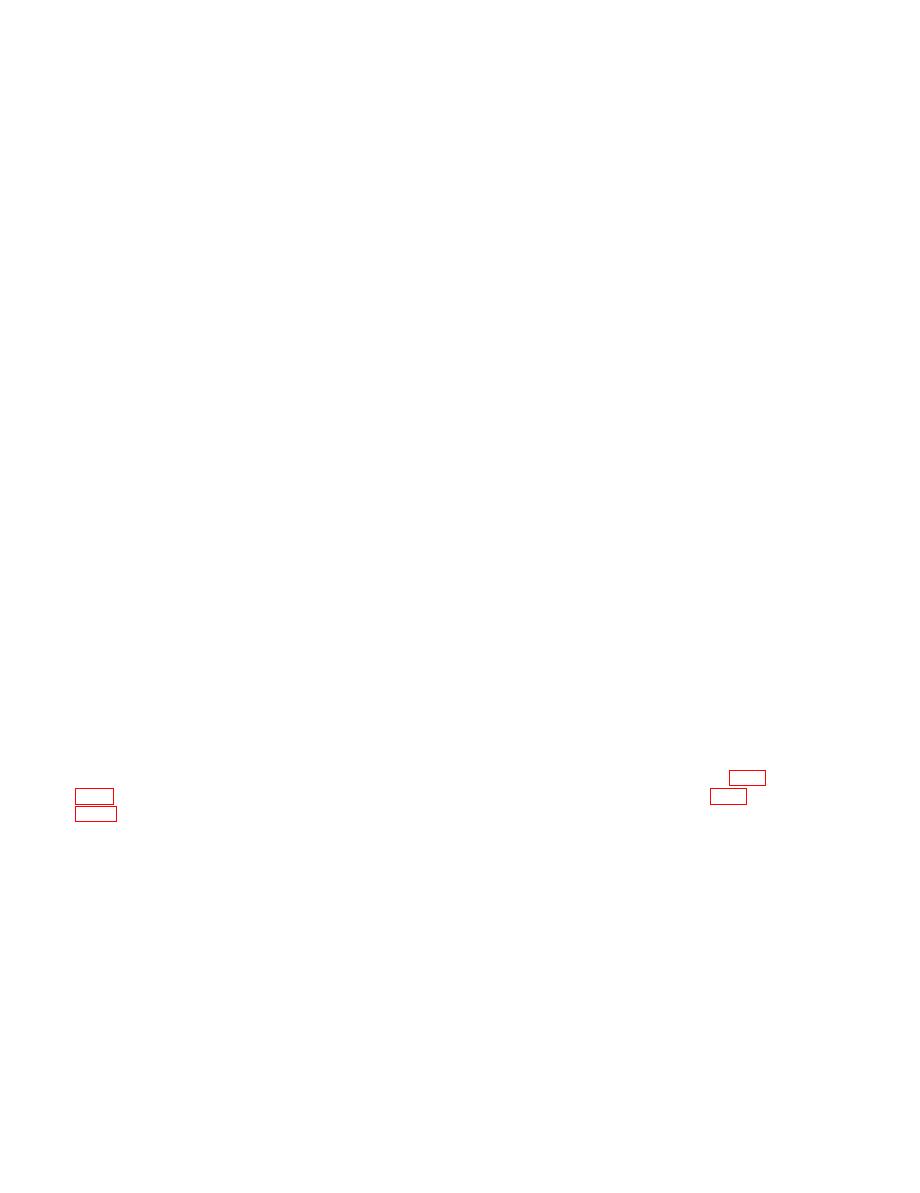 |
|||
|
|
|||
|
Page Title:
CORRECTIVE ACTION OR ADDITIONAL INSTRUCTION |
|
||
| ||||||||||
|
|  TM 11-5820-670-30
2-25. HOW TO USE THE TROUBLESHOOTING CHARTS. (CONT)
CORRECTIVE ACTION OR ADDITIONAL INSTRUCTION
A corrective action box or additional instruction box always follows a decision diamond. If a radio set
response does not meet the standard set in the decision diamond, the appropriately marked flow line
from the decision diamond will usually be followed to a corrective action box. If the radio set response
meets the standard, the flow line will be followed to an additional instruction box, which will either
continue the troubleshooting procedure or refer to the next test in the sequence.
INTERNAL CONNECTOR IDENTIFIER
There are two sizes of circular identifiers used in the troubleshooting charts. The smaller of the two is
the internal connector identifier. The internal connector identifier indicates a continuation of the pro-
cedure to another sheet in the same troubleshooting chart. The sheet on which the procedure is con-
tinued contains a corresponding identifier; that is, a small circle in which the same number is printed.
The number in the circle indicates on which sheet the test procedure continues. In the sample chart,
for example, the NO branch of the decision diamond flows to an identifier containing a 2. This means
that the procedure is continued on sheet 2, at the small circle containing 2. If there is more than one
connector on a sheet, a letter will be added to the sheet number such as 1A.
EXTERNAL CONNECTOR IDENTIFIER
The external connector is a large circle which references a paragraph outside the troubleshooting
chart. In the sample illustration, the large circle contains para 2-x. This paragraph reference identi-
fies the location of the A5 assembly replacement procedure, referred to in the preceding corrective
action rectangle. This replacement procedure is not found within the troubleshooting chart. Thus, a
large circle always references some information external to the flow chart.
NOTES
The third column on each troubleshooting sheet may contain notes used to clarify information
contained in the troubleshooting chart.
2-26. TROUBLESHOOTING CHARTS.
Prepare to perform troubleshooting by placing the rt on a test bench and removing the cover (para
When symptoms reported from operational tests indicate possible primary power troubles or symptoms
of trouble are unknown, check the primary power circuits for short circuits. When fault is found, repair
the trouble before applying power to the unit.
If symptoms are known as a result of performance tests or by report from AVUM maintenance, perform
troubleshooting to locate fault.
Perform preliminary procedure to adjust primary power supply. Then select troubleshooting chart
covering trouble symptom indicated by performance tests or by AVUM maintenance and change
preliminary procedure equipment setup as required. Then perform troubleshooting. If troubleshoot-
ing does not locate cause of malfunction, refer component to next higher level of maintenance.
2-54
|
|
Privacy Statement - Press Release - Copyright Information. - Contact Us |